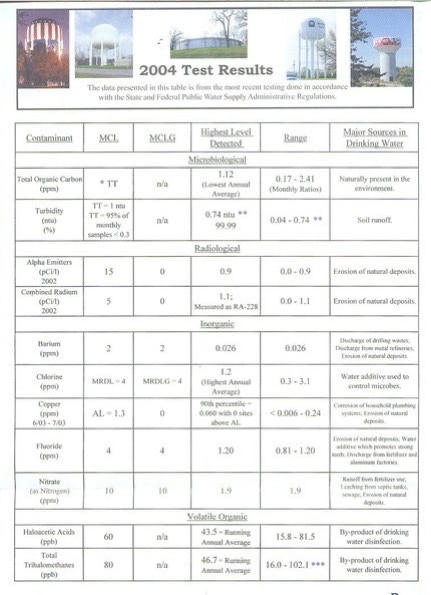Bottled Water is Stagnant Water


The Quality of our drinking water....and the poor quality of bottled water!
The quality of the water we drink is an important aspect of preventive health. Chemical waste from factories runs into our water supplies, and bacterial waste from sewage also finds its way back to the water supply. In recent years we have had to contend with radioactive waste and carcinogenic (cancer causing) chemicals as well. But what can we do about it? Should we drink only "bottled water"?
Municipal Water Supply
The water that you get from your tap at home is actually safer than bottled water. The water available in cities, such as Bowling Green, is strictly regulated by state and federal standards. As of 2004, the water in rural counties will also be put under the same standards. Bottled water is unregulated, and several medical studies have shown that commercial bottled water has a much greater chance of bacterial contamination.
The Problems with Bottled Water
Bottled water seems very clean in those clear plastic containers, but think about where it came from and what it has been doing. It came from municipal water supplies, just like your tap water, but instead of maintaining a flow, it has been stagnant for months or years (while sitting around in that beautiful clear plastic bottle). Stagnation of water is the major risk factor for bacterial contamination. About 1/3 of commercially sold bottles of water actually contain bacterial contaminants. If you cultured your tap water for bacteria, the chance of growing bacteria is practically zero.
Bottled water is stagnant water, it contains bacteria, and the plastic bottles pollute the environment.
The other big problem with bottled water is the bottles themselves. The manufacture of billions of plastic bottles produces a large amount of chemical pollution. Then there is the major problem of how to dispose of billions of plastic bottles once they have been used. Of course we should try to recycle them, but the reality is that very few of them ever make it into the recycle bin. The rest are pitched into the street to trash out the environment. Eventually they get thrown into trash cans, get hauled off to landfills, and accumulate for the next million years (since they are non-biodegradable!). By last count, 38 billion plastic bottles are discarded (not recycled!) per year in the United States.
"I love the convenience of carrying around my bottle of drinking water!" Yes! Please do continue to carry water to drink! Water is very healthy for you. But be smart and fill your (recycled!) clear plastic bottle with fresh tap water each morning. If you find one with a larger cap, it will be easier to clean. You will also save a lot of money!
Check this site for interesting facts about bottled water: Waterfiller.com
Water Additives
What about additives like chlorine that must be put into our water supply to kill bacteria? In this area, chlorine is the only additve used, and this is strictly regulated to maintain safe levels, that is under 4 ppm. As you see in the following table, we average around 1.1 ppm. The smell of chlorine can be annoying, but that can be eliminated by using a filter, such as a Brita water pitcher.
Should you purchase an expensive filtration system for your plumbing? No! It is a waste of money. If you have ancient plumbing with high lead levels, it would be better to replace the pipes with new ones.
Check the Water Quality in Your Area
Your local water district will publish a water quality report each year, as required by federal regulations. Here isa recentreport from Bowling Green Municipal Utilities. TheMCLis the maximum contaminant level, that is the highest level that would be considered safe. TheMCLGis the MCL "goal" which is a level at which no possible health threat exists. The goal might be zero, which would be physically impossible to attain, but the closer the better.

